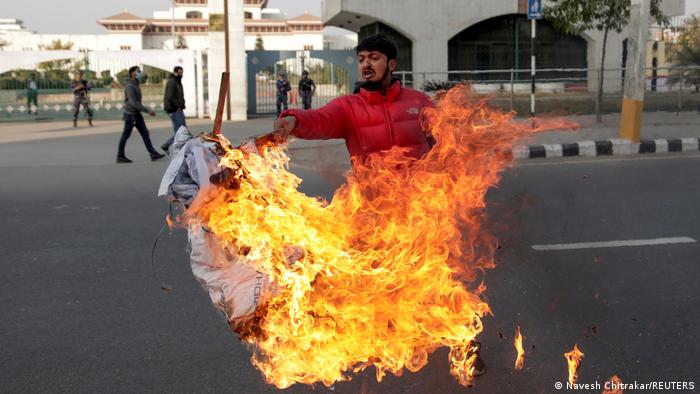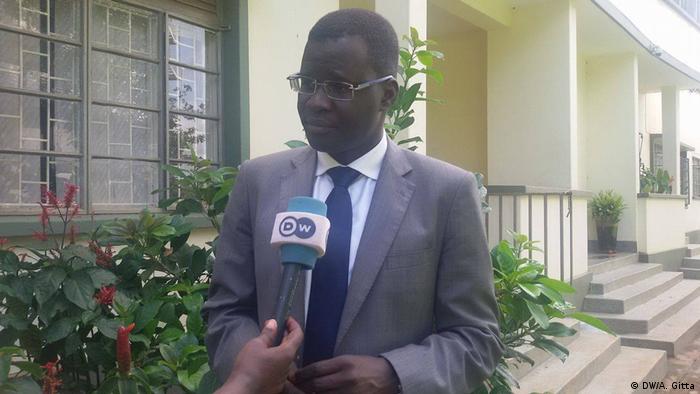Henry Wallace was attacked and then dismissed because he proposed “a century of the common man and woman.” Almost eighty years of that century have passed since his dismissal, and his fight for the future is largely forgotten.
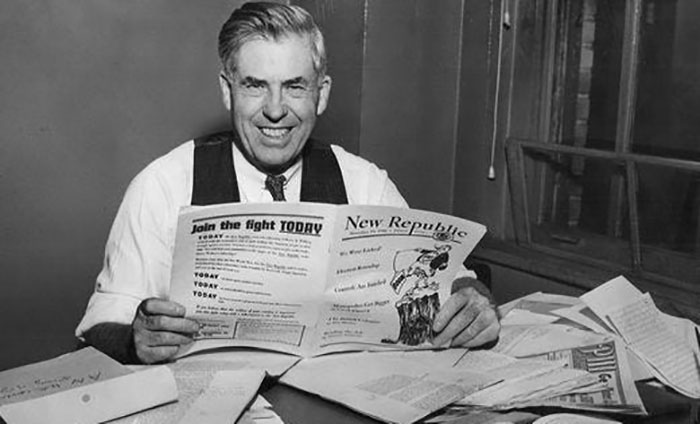
An excerpt from The Fight for the Soul of the Democratic Party: The Enduring Legacy of Henry Wallace's Anti-Fascist, Anti-Racist Politics by John Nichols,
In the summer of 1948, when his own fight against American fascism had been lost but he still refused to surrender the radical hope of a future framed by justice and peace, Henry Wallace would ask Pete Seeger to sing a favorite song. The words and music had been submitted by a young college instructor named Dick Blakeslee to the “People’s Songs” project that Seeger, Alan Lomax, Lee Hays and a handful of others launched after World War II to champion a revival of old folk music and new songs of work, struggle and idealism. Blakeslee’s lyrics sampled from Bible verses and ranged across American history. Yet his song closed in the moment, or, rather, in the moment that Wallace had hoped to create:
I was with Franklin Roosevelt’s side on the night before he died. He said, “One world must come out of World War Two, Yankee, Russian, white or tan,” he said, “a man is still a man. We’re all on one road, and we’re only passing through.”
As they traveled the backroads of North Carolina and the other segregated states where Wallace challenged racial hatred, Seeger would sing the words “a man is still a man.” Hundreds of miles to the north, a Jewish teenager from Montreal learned those words from a socialist summer-camp counselor. They inspired an interest in folk music that proved to be transforma- tive for Leonard Cohen. Years later, Cohen would add a slight variation to “Passing Through” as he sang the song from the concert stages of Europe and the Americas. After the line “One world must come out of World War Two” he would whisper “… ah, the fool.” Those who know something of Cohen’s wry romanticism, and the political penchants of the man who chal- lenged his adopted United States (“the cradle of the best and of the worst”) with the slyest protest song of his time (“Democracy Is Coming to the USA”), will recognize that this was no insult. Rather, it was an invitation to reconsider casual notions of wisdom and folly.
Wallace and Seeger barnstormed across the segregated South for a doomed third-party campaign for the presidency, that of a New Party, which came to be known as Progressive. They were demanding that the United States make real the promise of World War II as a liberation struggle meant to defeat fascism abroad and at home. They knew they were being portrayed as nostalgic New Dealers who refused to give up on the hope that died with Franklin Roosevelt; as dupes of the Soviet Union in a nascent Cold War; as naïve idealists. Yet they persevered, in the face of the physical violence of the Jim Crow South and the ideological violence of a dawning Red Scare. This was not just their own political project; it was the mission that FDR had outlined in the last months of his life.
“We cannot be content,” explained Roosevelt in the waning days of World War II, “no matter how high [the] general stand- ard of living may be, if some fraction of our people—whether it be one-third or one-fifth or one-tenth—is ill-fed, ill-clothed, ill-housed, and insecure.” Recognizing that “true individual freedom cannot exist without economic security and independ- ence,” the president warned, “necessitous men are not free men. People who are hungry and out of a job are the stuff of which dictatorships are made.” And he proposed to address the threat of future fascisms with “a second Bill of Rights under which a new basis of security and prosperity can be established for all— regardless of station, race, or creed.”
The Democratic Party that in 1940 nominated Roosevelt and Wallace would, as the decade wore on, abandon FDR’s certainty that “an economic declaration of rights, an economic constitutional order” was “the minimum requirement of a more permanently safe order of things.” But despite that surrender, Wallace refused to abandon the New Deal and the promise of Wendell Willkie’s manifesto One World and FDR’s Four Freedoms and Second Bill of Rights. He could not accept that an unjust order built upon the crumbling foundations of racism, monopoly and militarism would need to be maintained for decades, and then generations, because his own Democratic Party had lost its nerve—and its faith.
Wallace, a brilliant writer and thinker and an accomplished editor, cabinet member, vice president, presidential candidate and businessman, never suggested it would be easy to end segregation and sexism, address poverty and inequality, upend the military-industrial complex and avert nuclear war. Rather, with the support of Albert Einstein, W.E.B. Du Bois, a young Betty Friedan and a younger Noam Chomsky, he argued that this program was an urgent necessity that could not be cashiered as political concession or electoral compromise. His supporters circulated posters with the picture of an African-American youth and the message: “A black child born on the same day in the same city as a white child is destined to die 10 years earlier. … We are fighting for those 10 extra years.”
Wallace embraced a “new liberalism,” asserting: “A liberal is a person who in all his actions is continuously asking, ‘What is best for all the people—not merely what is best for me personally?’ Abraham Lincoln was a liberal when he said he was both for the man and the dollar, but in case of conflict he was for the man before the dollar. Christ was the greatest liberal of all when he put life before things.” He identified as a patriotic American who believed “in using in a nonviolent, tolerant and democratic way the forces of education, publicity, politics, economics, business, law and religion to direct the ever-changing and increasing power of science into channels which will bring peace and the maximum of well-being both spiritual and eco- nomic to the greatest number of human beings.”
These were not uncommon notions at a time when political leaders, having survived the Great Depression and thwarted Adolf Hitler, imagined a new world order of peace and prosperity, freedom and equality. Clement Attlee, Aneurin Bevan, Jennie Lee, a young Michael Foot, a younger Tony Benn and the British Labour Party preached another version of this social gospel as they set out to win the peace in 1945 with a “Let Us Face the Future!” campaign on behalf of a national health care system, the nationalization of basic industries and a redistribution of wealth from Downton Abbey elites to the toiling masses. Tage Fritjof Erlander, Einar Henry Gerhardsen and the Scandinavian social democrats echoed that message as they forged the model of the modern social welfare state. Jawaharlal Nehru, Bhimrao Ramji Ambedkar and Rajkumari Amrit Kaur joined their voices to the chorus as they saw off British colonialism and announced that “at the stroke of the midnight hour, when the world sleeps, India will awake to life and freedom.”
In America, however, Wallace was deemed dangerous by the Southern power brokers, the patronage bosses, the corporatists and the monopolists who were quite happy to bury the New Deal with FDR. The men who schemed to divert the postwar march of democracy disdained Henry Wallace. And he disdained them. Their corruptions, their calculations, he warned, were the stuff of “American Fascism.”
From the mid-1940s onward, Wallace was prepared to name the enemies of human progress. He shared Paul Robeson’s view that the danger for the United States in the postwar era lies “in the resurgent imperialist and profascist forces in our own country.” As the vice president of the United States, he did not hesitate to make the appropriate, yet too rarely spoken, connection between Hitler’s preachments about racial “purity” and the language of Southern segregationists who also spoke of a “master race.”
For Wallace, a breaking point came in the summer of 1943, after racial violence flared in Detroit, leaving thirty-four dead (including seventeen African Americans at the hands of the police). Wallace traveled to the city and addressed a mass meeting of labor and civic organizations. “We cannot fight to crush Nazi brutality abroad and condone race riots at home,” he told the crowd. “Those who fan the fires of racial clashes for the purpose of making political capital here at home are taking the first step toward Nazism.” Wallace warned: “There are powerful groups who hope to take advantage of the President’s concentration on the war effort to destroy everything he has accomplished on the domestic front over the last 10 years. Some people call these powerful groups ‘isolationists,’ others call them ‘reactionaries’ and still others, seeing them following in European footsteps, call them ‘American Fascists.'"
Those were jarring words from the vice president of the United States, but Henry Wallace chose them carefully. Starting when he was Roosevelt’s secretary of agriculture, Wallace studied foreign languages so that he could speak directly with the leaders and planners of the fight against Hitler and his Axis. He traveled widely and consulted often with those who had resisted the rise of fascism in Europe and who were resisting its pull in Latin America and Asia. He made a study of the threat, and he intended to speak about it in an American context. He proposed a broad definition of this charged term that could apply to the racists, warmongers and monopolists who manipulated media and politics to maintain their grip on America.
Speaking to that 1943 mass meeting in one of the nation’s great industrial centers, Wallace warned that “the people of America know that the second step toward fascism is the destruction of labor unions. There are midget Hitlers here who continually attack labor. There are other demagogues blind to the errors of every other group who shout, ‘We love labor, but…’ Both the midget Hitlers and the demagogues are enemies of America. Both would destroy labor unions if they could. Labor should be fully aware of its friends and of its enemies.”
Wallace ripped into industrialists. “We know that imperi- alistic freebooters using the United States as a base can make another war inevitable,” he warned. “Too many corporations have made money by holding inventions out of use, by holding up prices and by cutting down production.”
Could the schemes of the midget Hitlers, the imperialist freebooters, the American fascists be stopped? “Shouldering our responsibilities for enlightenment, abundant production and world cooperation, we can begin now our apprenticeship to world peace,” Wallace said. “There will be heart-breaking delays—there will be prejudices creeping in and the faint-hearted will spread their whispers of doubt. But … nothing will prevail against the common man’s peace in a common man’s world as he fights both for free enterprise and full employment.
“The world,” pledged Henry Wallace, “is one family with one future—a future which will bind our brotherhood with heart and mind and not with chains!”
Segregationists, the captains of industry and the big-city bosses of the Democratic Party set out to destroy Wallace, and for the most part they succeeded. They denied him the vice-presidential nomination at the 1944 Democratic National Convention and, by extension, the prospect of the presidency, for it was well understood that, were a Roosevelt-Wallace ticket to be re-elected in 1944, an ailing Roosevelt would in all likelihood be replaced by Wallace. They drove Wallace from the power- ful cabinet position that FDR had chosen for him, secretary of commerce, in the Truman administration. In the late 1940s, they elbowed the former vice president to the margins of American politics and then shoved him into the shadows. Eventually, they reimagined our history and our politics so aggressively, and so completely, that Wallace’s warnings were laughed off as a sort of political madness while generation after generation of centrist Democrats neglected fundamental economic and social challenges. Ultimately, FDR’s New Deal coalition collapsed and a yawning space was opened for the sort of “American fascist… who in case of conflict puts money and power ahead of human beings.” With the arrival of Donald Trump on the political scene—to the accompaniment of headlines like the CBC’s that asked: "Flirting With Fascism: America’s New Path?"—the full consequences of that failure reveal itself.
Wallace could be prophetic. He raised the prospect of a totalitarianism, of a soft fascism, lurking beneath the facade of democracy in the United States. What he suggested was unimaginable for many in his time, as it is for many in this time. Yet as the U.S. slides further down democracy indexes, even those compiled by corporate-friendly groups like The Economist Intelligence Unit, there must be a recognition that established norms are being diminished, that standards are being disregarded. Wallace urged us to be on the alert for moments such as this. More importantly, he outlined ideals and agendas for avoiding them.
There were those in his time who worshiped Wallace as a hero, and those today who do the same. But Wallace would have been the first to tell you about his flaws. He was constantly reassessing his stances, based on new information, and he was quite capable of acknowledging when he had been wrong. His mistakes are a part of his story. Indeed, they help us to make sense of why an exceptionally popular and extraordinarily talented American leader came so close to the presidency, only to be quickly and thoroughly marginalized.
Any political assessment of Wallace must look at the whole man. Even his sharpest critics acknowledged that Wallace was known for “modesty, human decency, competence, energy, and receptivity to new ideas,” as essayist Dwight Macdonald said. Wallace was confident that it was possible to reason to a better world. FDR described his vice president as “Old Man Common Sense,” but James Farley, the Democratic National Committee chairman, saw Wallace as “a wild-eyed fellow” who might scare away party backers in the South with his talk of eliminating the poll taxes and “white primaries” that locked in segregationist power. Certainly there was nothing of the traditional backslapping campaigner in Wallace. He arrived on the national scene with few political skills, and turned too frequently for counsel to others who lacked those skills. “I love him as much as you do,” novelist Dashiell Hammett confided to playwright Lillian Hellman, “but you simply cannot make a politician out of him.”
Yet Franklin Roosevelt did make a politician out of Henry Wallace, at a moment in 1940 when the 32nd president of the United States was under assault by conservatives in both parties. By choosing Wallace as his running mate, historian Doris Kearns Goodwin suggests, FDR elevated a leader who was “as strong or stronger than he was on those liberal issues” that mattered most then. Goodwin has argued that FDR promoted Wallace from his cabinet to the vice presidency not to be a party man but to be “a weapon against the conservatives.”
Wallace was against the conservatives, wherever he found them, and at every stage of his life. A born-and-bred “Party of Lincoln” Republican who became a Teddy Roosevelt Bull Moose Progressive in 1912, he then returned to the Republican fold and remained there until he embraced Wisconsin Senator Robert M. La Follette’s independent Progressive campaign of 1924. Wallace rejoined the Republicans and worked to steer the party to the left, in tandem with his influential father, who served as secretary of agriculture in the Harding and Coolidge administrations. As Herbert Hoover’s Republican presidency imploded in 1932, Wallace signed on with FDR and became the most ardent New Deal Democrat. After Roosevelt’s death and his expulsion from the inner circles of power and the Democratic Party, Wallace launched his New Party project, which became the Progressive Party, to mobilize the left for the 1948 election. Eventually, Wallace voted for Dwight Eisenhower because of the Republican president’s recognition that domestic programs would be cheated to feed the Pentagon, and because the old soldier saw the threat posed by the military-industrial complex. Toward the end of his life, Wallace displayed considerable enthusiasm for Lyndon Johnson’s Great Society programs. But before he died in 1965, Wallace was expressing dread over LBJ’s lurch toward war in Southeast Asia.
There were plenty of liberal Democrats who loved Wallace’s passions and policies but distanced themselves from his campaigning because they feared it was simply too bold for the times. Wallace brought some failures upon himself. He could be strategically inept. He erred in his assessments of particular people and particular policies, at home and abroad. He was a deeply religious man who explored the spiritual traditions of his own Christian faith and other traditions with an enthusiasm that sparked ridicule and concern. He was, as wise historians always say with a poignant pause, a complex man. With the exceptions of Thomas Jefferson, Abraham Lincoln, William Jennings Bryan and a handful of others, he was as fascinating a figure as the ferment surrounding the American presidency has yet produced. The story of how the editor of an Iowa agricultural journal, Wallace’s Farmer, became the most controversial vice president in the twentieth century has inspired fine biographies. In American Dreamer, former Iowa Senator John Culver and journalist John Hyde ably explain how the son of Calvin Coolidge’s Secretary of Agriculture came to define New Deal liberalism and mounted a doomed 1948 challenge to Truman as the nominee of a party that welcomed radicals, socialists and communists. Filmmaker Oliver Stone and historian Peter Kuznick collaborated on The Untold History of the United States, a 2012 book and television series; in it, they advanced the argument that, had Wallace remained on Roosevelt’s ticket and succeeded FDR in 1945, “there would not have been this Cold War. There would have been the continuation of the Roosevelt- Stalin working out of things. Vietnam wouldn’t have happened.” The Stone-Kuznick project was hailed by former Soviet President Mikhail Gorbachev and journalist Glenn Greenwald, savaged by neoconservatives and dismissed by Princeton history professor Sean Wilentz as “a skewed political document.” In truth, Wallace remains so controversial that every examination of the man inspires excitement and enthusiasm, objection and acrimony.
The debate about Wallace and a presidency that might have been has often distracted us from an understanding of what Wallace’s fights in the mid-1940s were about, and how they defined the Democratic Party. It is the purpose of this book to renew that understanding. The abandonment of progressive populism by the Democrats, along with the redistributionist policies that FDR developed and popularized, did much to destroy the New Deal coalition. Ronald Reagan would exploit it in the 1980s, winning landslide victories by drawing so-called “Reagan Democrats” to the extreme right. This opened a void in American politics that would be filled first by the self-serving politics of corporate “centrists” in both parties and then, as neoliberalism failed to answer the needs of the great mass of people, by the right-wing populism of Donald Trump. There are many wise observers who believe that the Democratic Party cannot be reformed. But a reflection on Wallace raises a question in this moment of political, economic and social ferment, of Bernie Sanders and Alexandria Ocasio-Cortez and resurgent democratic socialism and Elizabeth Warren’s promise of “big, bold structural change”: Might today’s Democratic Party take up where FDR and his vice president left off, and become an alternative to the overt and covert American fascism Wallace warned us about?
Answering this in the affirmative is the mission of an insurgency within the Democratic Party that has grown from Sanders’s 2016 presidential bid and the efforts of a new generation of activists who have often operated outside the political arena but now seek to transform debates about domestic and foreign policy This makes Wallace’s struggle more than an isolated story from an all-but-forgotten past.
Trump’s election created a sense of urgency. But Democrats must know something about how it all fell apart in order to see how it all might be put together again. It is easy to be drawn to the 1948 campaign, as it provided a rare glimpse of what multiparty competition might look like in a country dominated by the two “old parties” that so frustrated Wallace and his contemporaries, and that still frustrate the majority of Americans who tell pollsters they long for different and better political options. The 1948 race offered more plot twists than all but a handful of campaigns in American history, along with a dramatic conclusion that produced the greatest wrong headline of all time: “Dewey Defeats Truman.” Truman was, of course, not defeated, and his victory defined the Democratic Party going forward.
There have been significant examinations of the 1948 campaign in general and of Wallace’s crusade in particular. Curtis D. MacDougall’s deeply reported 1965 text, Gideon’s Army, tells an essential story, as does Thomas Devine’s thoughtful 2013 book, Henry Wallace’s 1948 Presidential Campaign and the Future of Postwar Liberalism. For those on the old left who remember it, and for a rising generation of young leftists, the 1948 campaign has become the electoral equivalent of the Spanish Civil War, where a Gideon’s Army of campaigners armed with leaflets and placards takes the place of the Abraham Lincoln Brigade. For guardians of the status quo, the 1948 campaign is something else altogether: a blunt instrument to pull out whenever they feel it necessary to warn against what Wallace described as a “keep the door open” popular-front politics that makes common cause with socialists, communists, social justice crusaders and radical reformers. The contention is less intense now than it was in the days when Democrats shuddered at the mention of the term “Wallace-ite” and its successor: “McGovernism.” History will circle back to the 1948 campaign and it will continue to evoke radically different interpretations of what was, and what might have been. More books will be written on Wallace’s presidential bid in general, and its courageous challenge to racism in particular.
19 May 2020

Reviews
“More than a history book—this is an examination of what progressives must do to retake our democracy. Nichols points the way toward how we can build a party based on peace, liberty, and justice for all.”
“Every progressive must read this book. John Nichols reminds us that Henry Wallace was the true heir to Roosevelt’s New Deal. He stood up against militarism, championed health care as a right, and fought for racial justice. When the party bosses denied Wallace a place on the Democratic Party’s 1944 ticket, they chose caution over a bold vision for ‘winning the peace’ with an Economic Bill of Rights and the Four Freedoms. As Nichols reveals, that set a pattern for compromise that sold the party and the nation short. Now, seventy-five years later, as progressives again fight for the soul of the Democratic Party, Nichols gives us the history and vision for a new progressive era.”
“Henry Wallace is a political figure—one of the giants of the mid-twentieth century—who has kind of been pushed out of the national political discussion … Nichols [tells us] that one of the reasons Wallace was not renominated in 1944 was because of his opposition to racism. The segregationists didn’t want him around.”
“Nichols is a remarkable thinker and writer. He recognizes that fights that were not won in the past by advocates of economic and racial justice and peace can now be won—if we are determined enough, and hopeful enough, to carry the struggle forward.”
“Nichols is so good at exploring the roots of U.S. radical politics, including our long socialist history. He puts the fights we’re in now into perspective—and gives us inspiration to carry on.”
“Henry Wallace thought we could avoid the Cold War internationally and work on addressing racism at home. He was ahead of his time, and he was punished for that. Maybe, now, we can recognize he was right about a lot of things.”
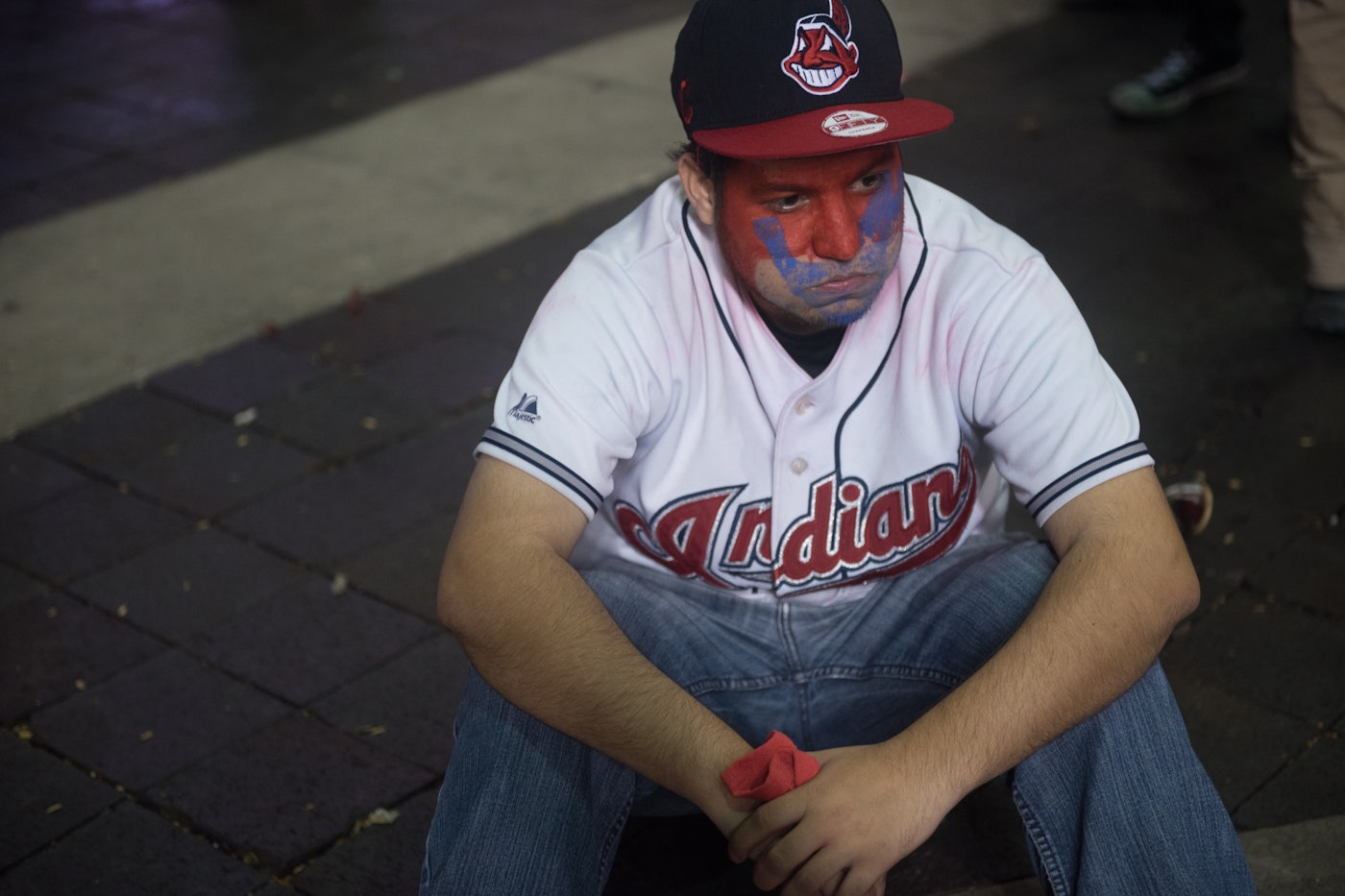
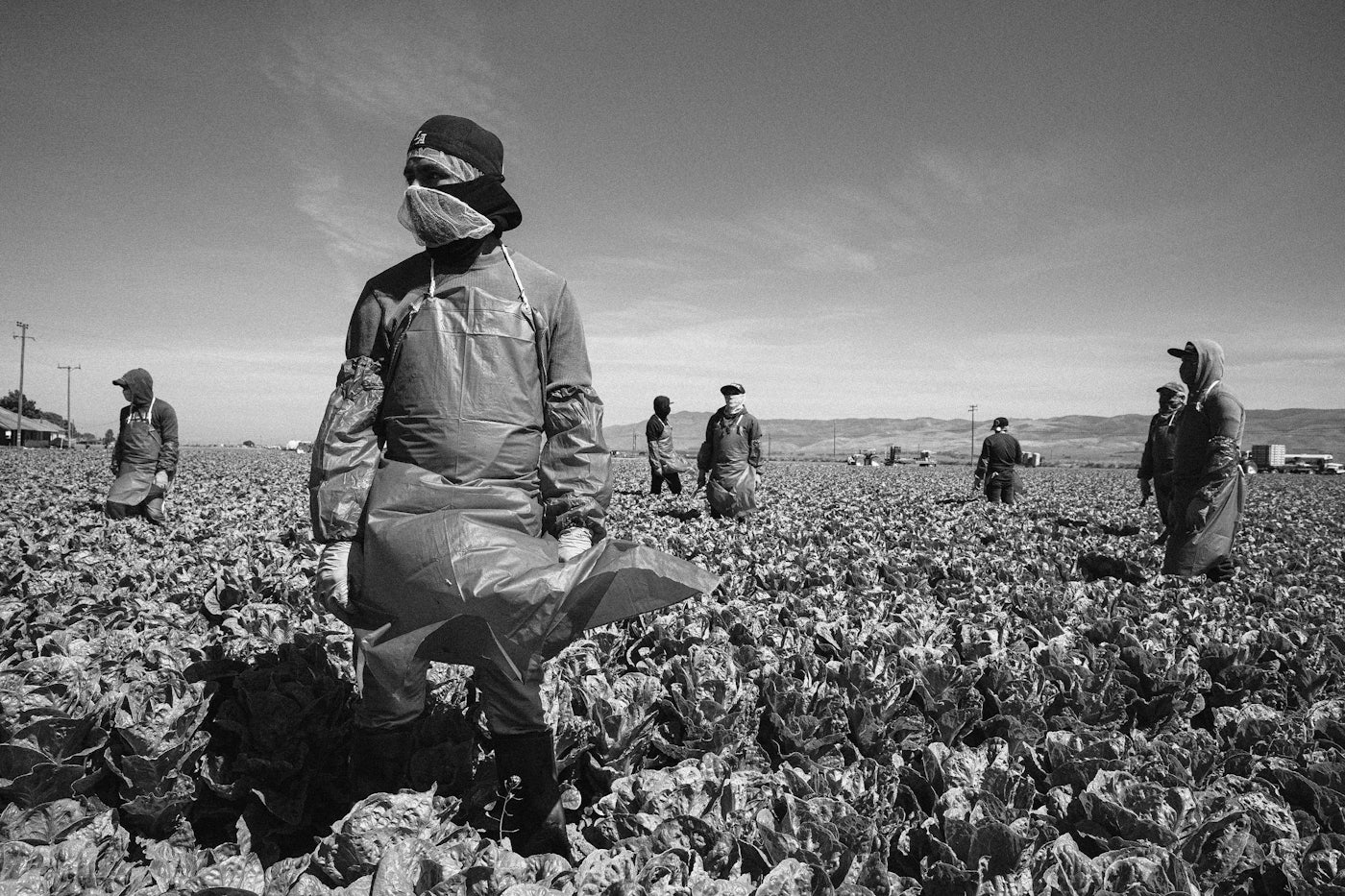
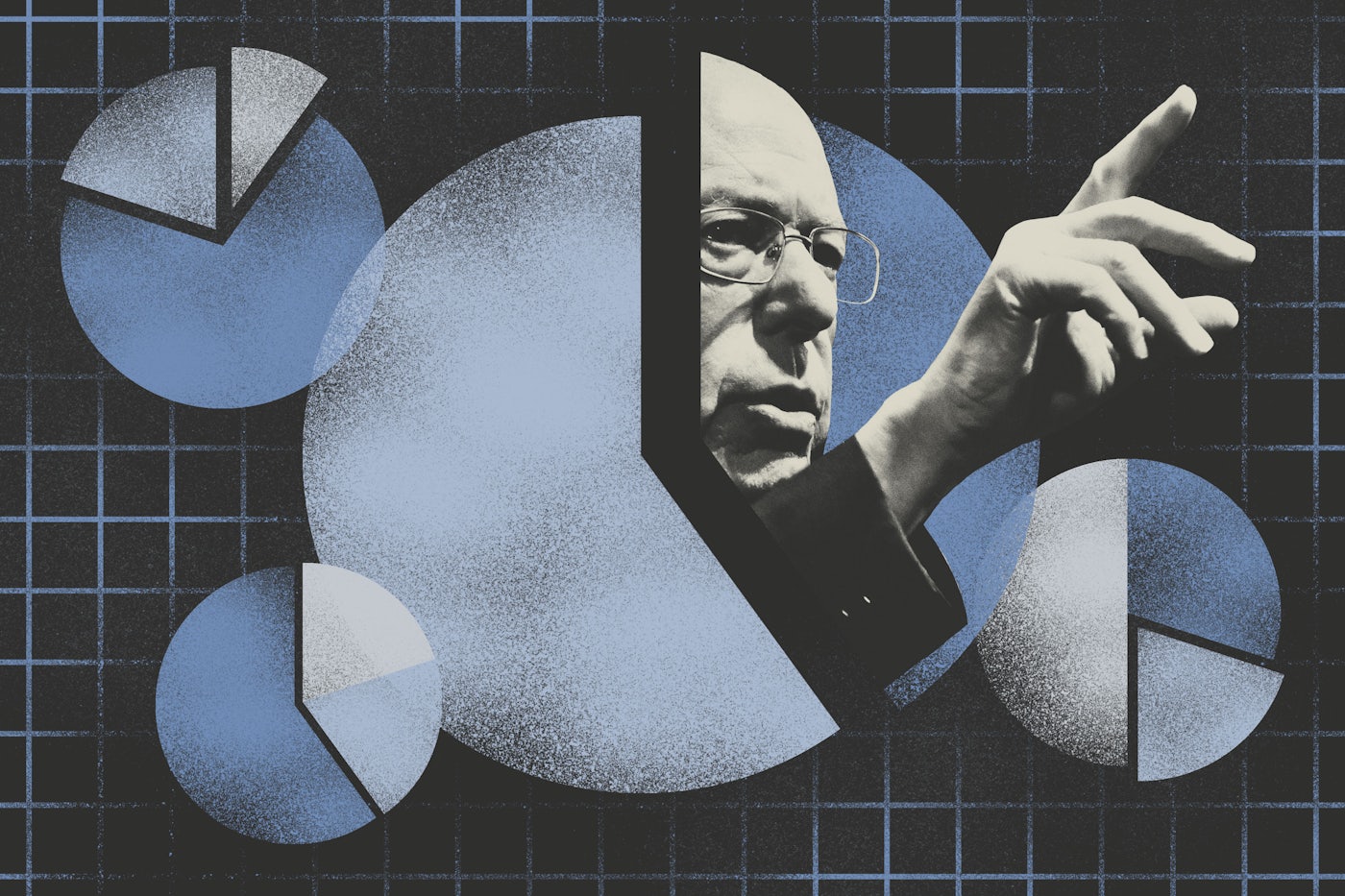

 Global News
Global News


